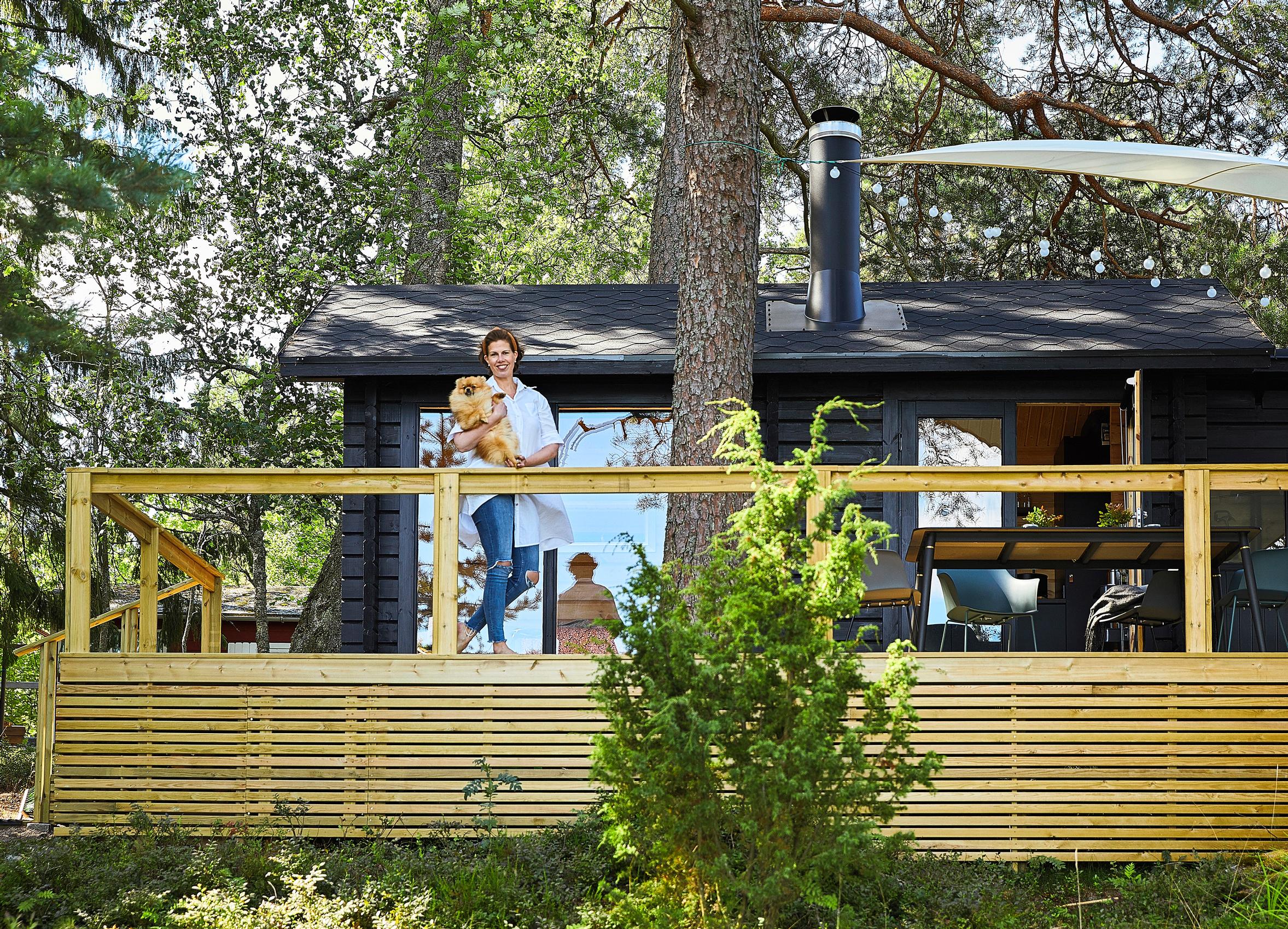
12-square-meter archipelago cabin offers an escape from everyday life—“This place had everything I hoped for: the sea, the rocks, pine trees, and shrubs”
An island near her city home was the answer to Mirka Saarinen’s longing for a cottage. Nicknamed the Little Black, the cabin, with its simple daily tasks, provides a break from everyday life.
Start up the motorboat, and in just a few minutes, you’re at your very own island cabin! This is how Mirka Saarinen now spends her free time. In the fall of 2019, she had a cabin built on an island that is part of a public recreation area in the Espoo archipelago.
“I had a yearning for a cottage and wanted something that would take my mind off my hectic everyday life,” says Mirka, who works as an entrepreneur.
Mirka’s budget didn’t allow for a year-round vacation home, nor was she interested in a fixer-upper, which older cottages typically are. The cottage setup had to be easy enough for Mirka’s small family, which includes her eight-year-old son Sulo and her one-year-old Pomeranian, Junnu.

A few years ago, Mirka’s friend purchased a cabin on the island, and that sparked Mirka’s interest. So when a rundown 1950s cabin near the shore went on sale, Mirka didn’t hesitate.
“I wanted to be here, too. This place had everything I hoped for: the sea, the rocks, pine trees, and shrubs! My cabin isn’t winterized, but once spring arrives, I can have everything ready in 15 minutes,” Mirka says happily.
The old cabin was torn down and replaced by a new 12-square-meter cabin with a deck.



At Mirka’s request, the cabin’s original design was modified to include extra windows. She initially considered a sleeping loft for her son, but changed her mind—a low loft would have been too warm in the summer. Only the necessary support beams were installed, leaving the small cabin feeling more spacious.
“I bought a prefab kit, thinking that putting the cabin together would be simple and it wouldn’t require much work from me. But what arrived was a pile of logs, from which we had to start assembling the cabin,” Mirka says.
Some essential logs were even missing from the shipment. Mirka entrusted the build to a skilled construction worker, who brought all the materials over with his sturdy boat. Mirka helped with the construction as much as she could.
The cabin was completed in the fall of 2019, and final touches—like the deck—were done in the spring of 2020. Finally, Mirka painted the cabin black and nicknamed it the Little Black.


The cabin has no electricity. As evening falls, a battery-powered lantern brings enough light.
The island has potable municipal water, which Mirka carries to the cabin from the closest water station. She washes dishes by hand under a small canopy next to the storeroom. Without electricity, the cabin relies on a wood-burning stove for warmth, while solar panels power the fridge.
For heating water, Mirka repurposed a boiler from her grandmother’s old home, and she cooks on a gas stove and a grill. A friend advised her to invest in a robust grill that would withstand the marine climate. The gas cylinder travels to the island on Mirka’s motorboat, as did the bed. Underneath the bed is an extra mattress, where Sulo sleeps, sometimes joined by a friend.
Mirka has kept the cabin’s color palette subtle so it blends with the surroundings. The log walls were left exposed on the interior, and the kitchen cabinets and furniture are black and gray. The red-patterned quilt is something she inherited from her grandmother.
After securing the site for the cabin, Mirka promised her son he could always invite a friend. When he doesn’t have company, Sulo reads Donald Duck comics or plays games with his mom. Besides summer vacation, the family come to the cabin on weekends and sometimes just for an evening swim.
“There’s no TV here to distract us, and the phone isn’t as tempting as it is in the city,” Mirka says gratefully.



The recreational island hosts community activities, like fishing events and children’s running competitions. It also has an active Facebook group, and through it, Mirka has both passed along items she doesn’t need and acquired useful things herself.
What Mirka especially loves about staying at the cabin is living in the moment. She runs Seurana, a company that provides companionship for the elderly, so she’s used to giving her time to others. Here, hauling water buckets and picking berries give her mind a total reset.
“Island life is pure mindfulness for me. There’s a certain thrill in hauling supplies, starting the boat, and everything like that. I feel like Stormskerry Maja,” Mirka says with a laugh.
Mirka loves to sit on the deck in the evening sun, tune into Järviradio, and watch the ever-changing sea. Then she lures Junnu out from under the cabin and reads Harry Potter as a bedtime story for Sulo.



